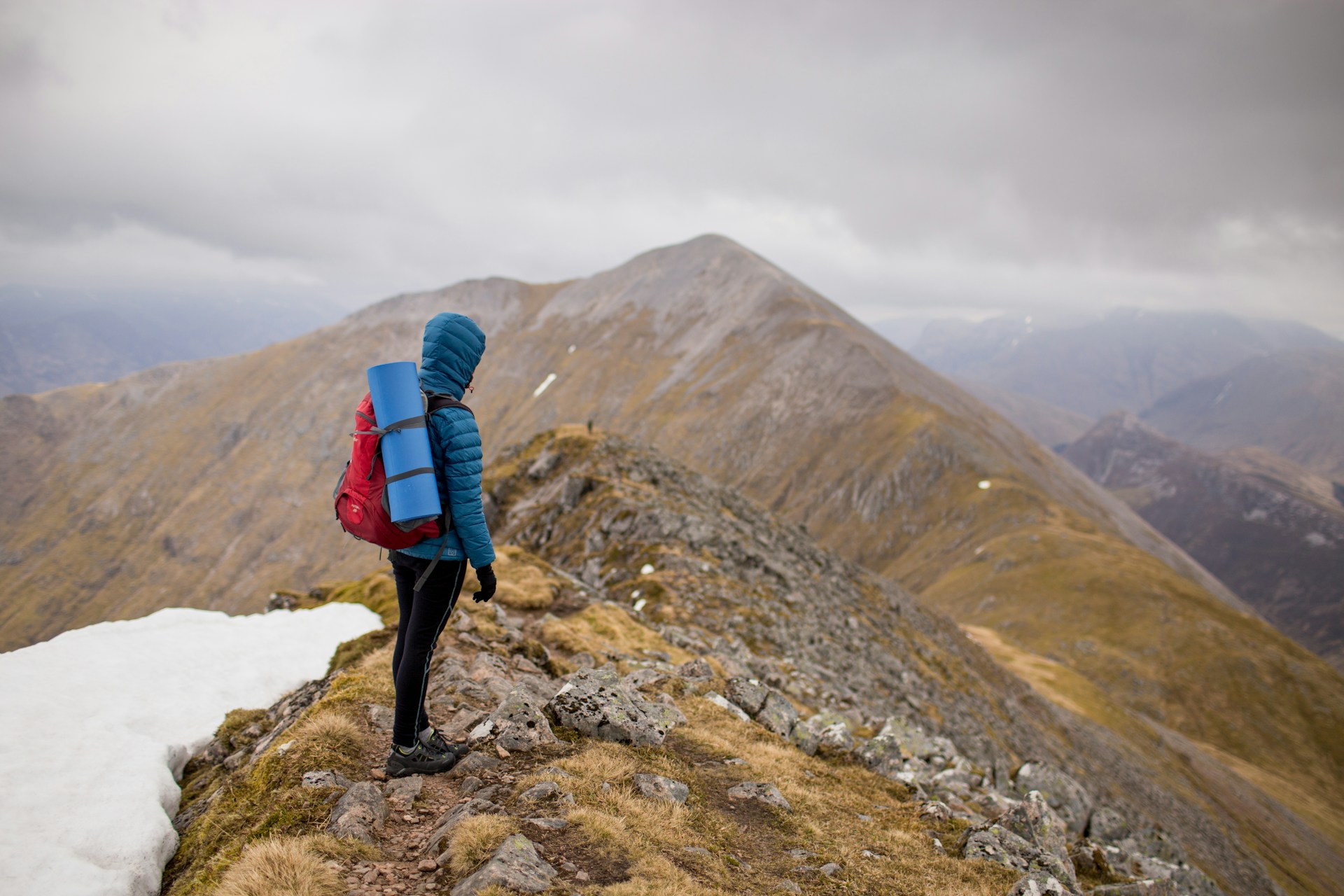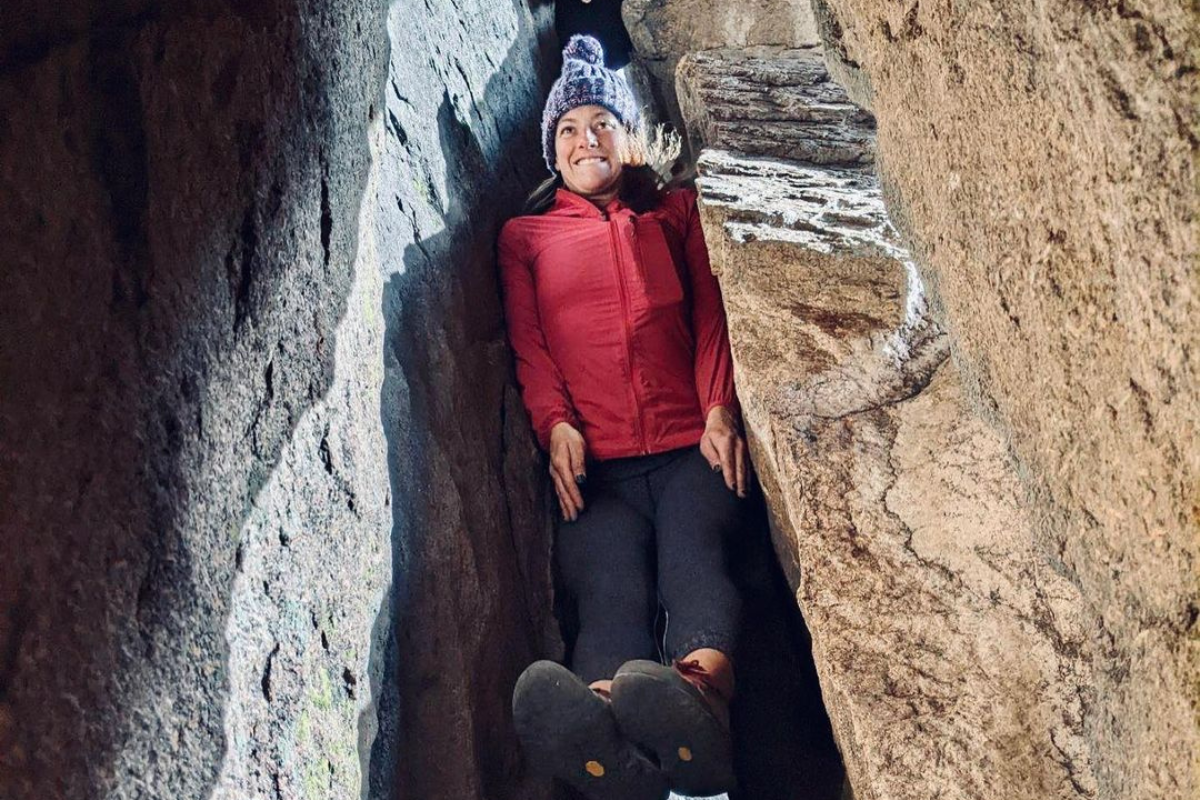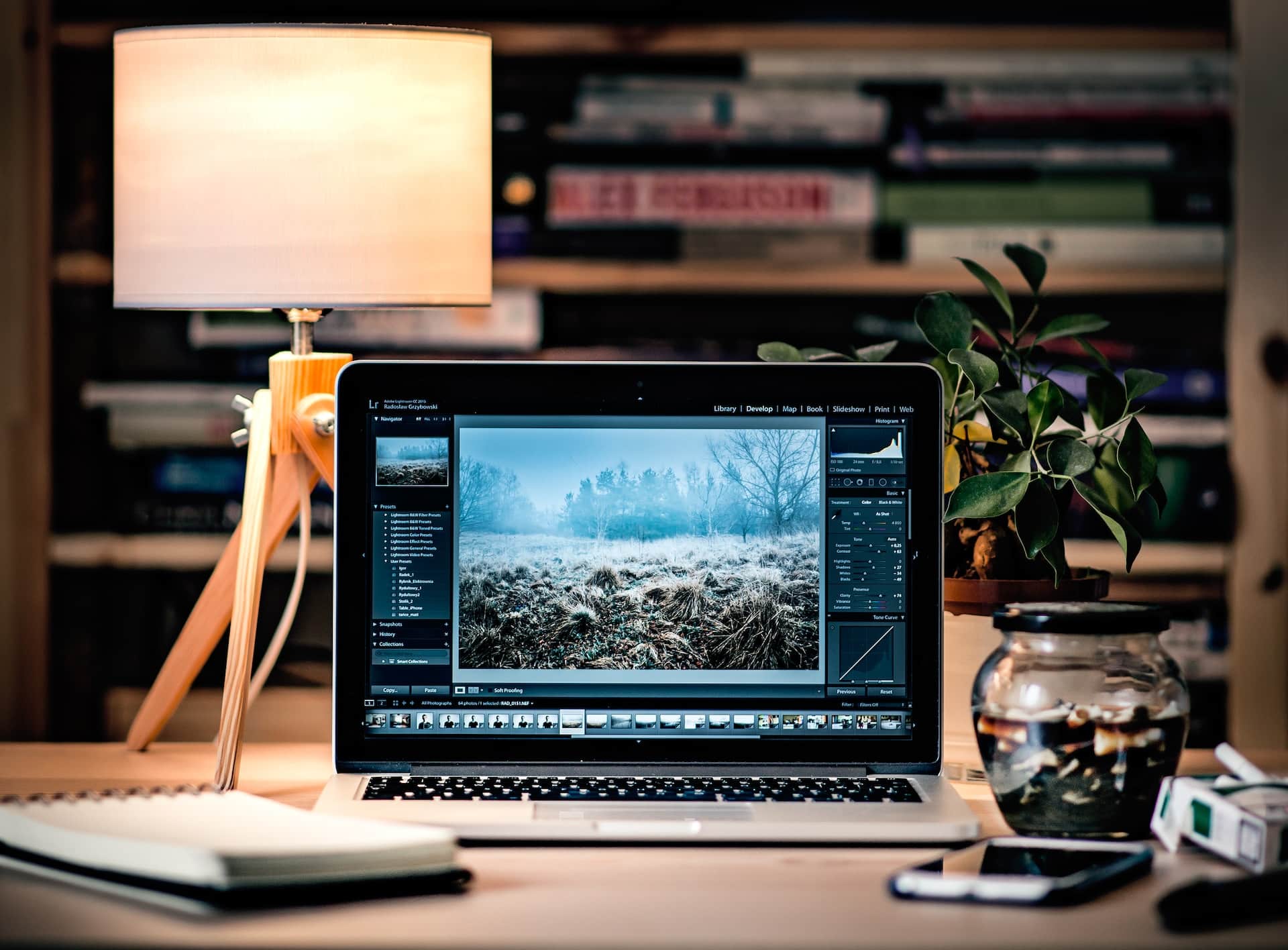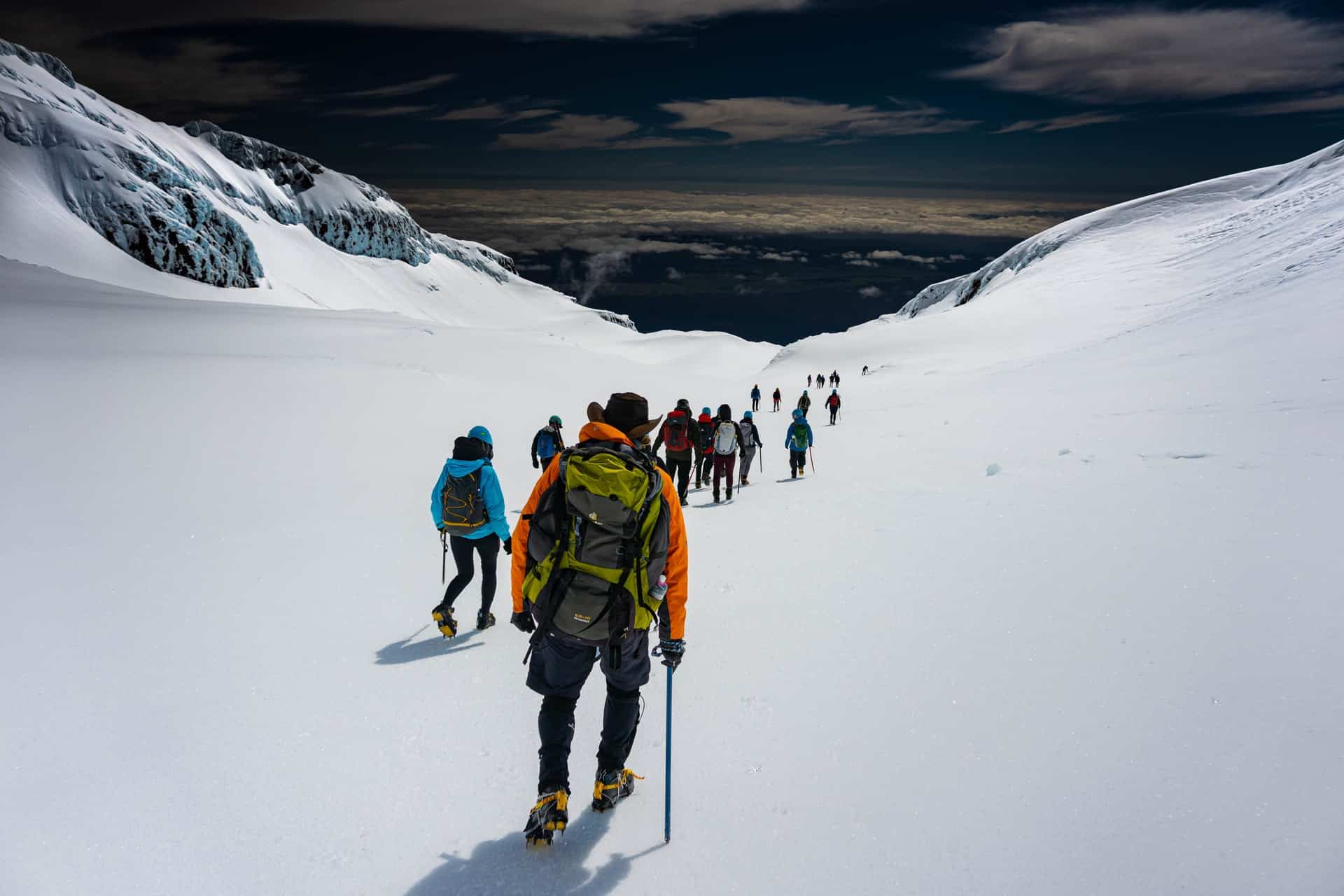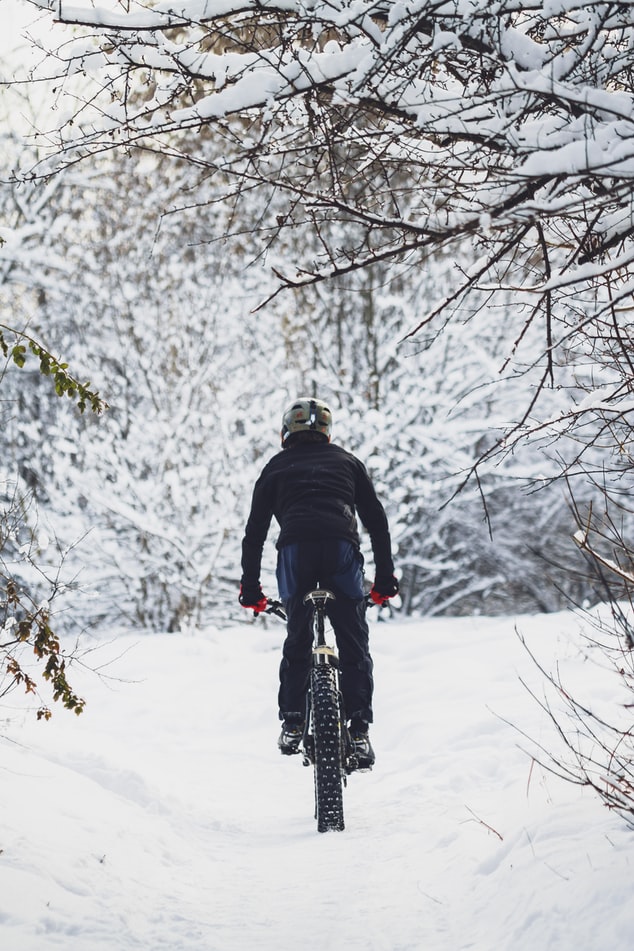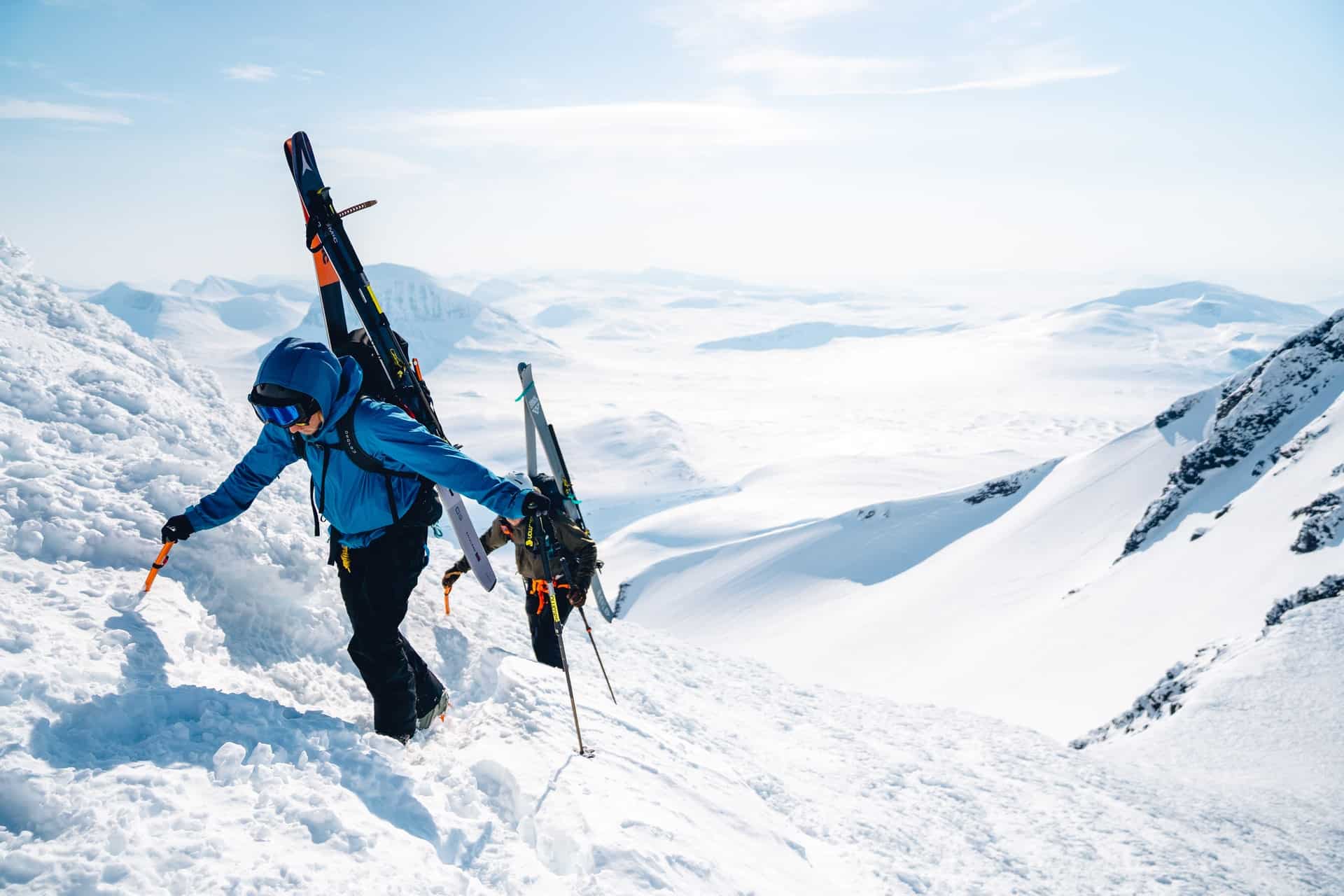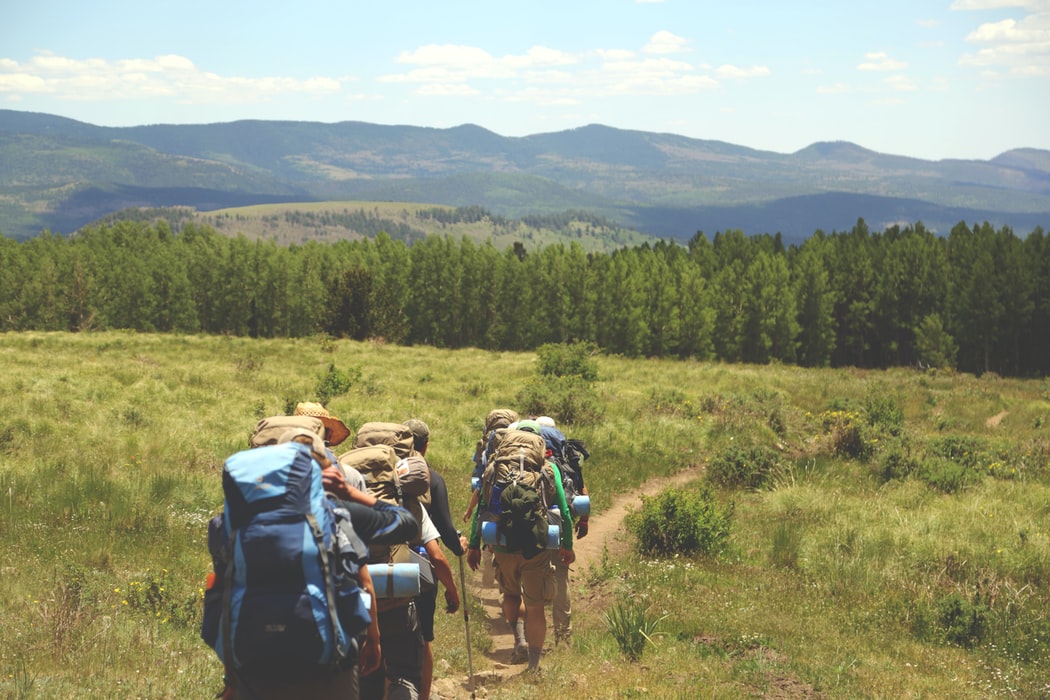March is Women’s History Month and we’ve got a lot to celebrate. We reached out to our clients to send us their amazing stories answering the following questions:
1. Why did you want to become a guide?
2. What’s your favorite part of the job?
3. What’s your least favorite part of the job?
4. What are some hard truths about guiding?
5. How do you see guiding evolving in the future?
6. What’s something about your job most people don’t realize?
We weren’t sure what kind of riveting stories we’d hear because we assumed anything was possible with this group—and we were stoked with all of the responses. We compiled this list (which we’ll continue to add to) to showcase women from around the world with a multitude of talents, skills, and gumption.
Enjoy these Guides’ stories and make sure to book your next adventure with them too!
Maria Tucholke, An IFMGA Guide For San Juan Expeditions
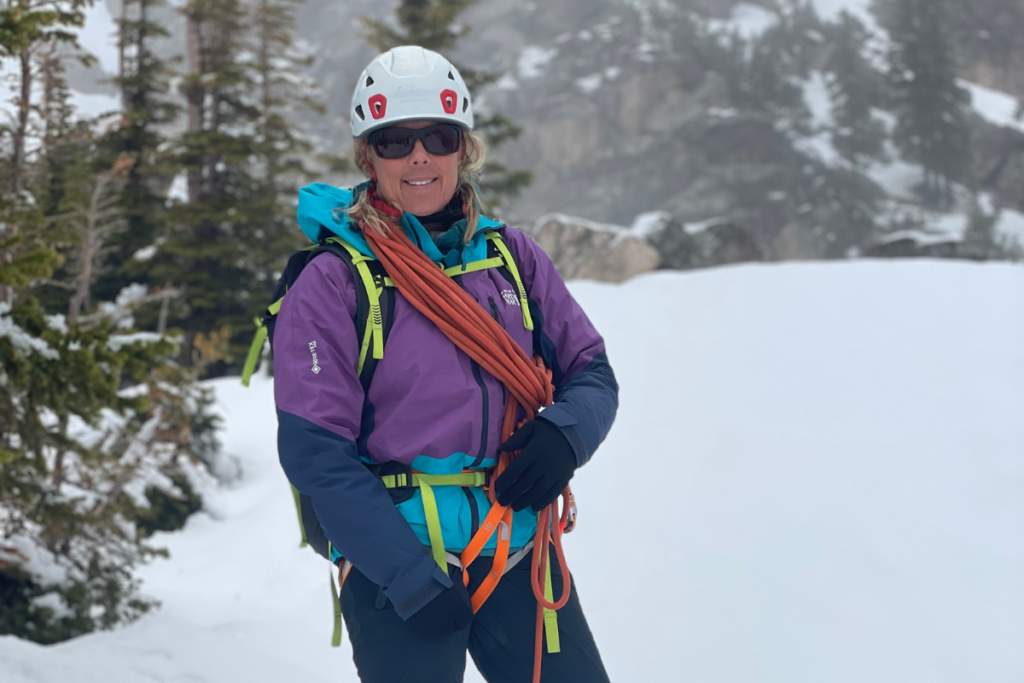
Bio:
Mia has worked in the outdoor industry since 1985 when she moved to the mountains of Colorado. Although she has made the Vail area her home base for almost 30 years, she has traveled far and wide in search of outdoor adventures. She has climbed the highest peaks in North America, explored the Himalayas, climbed ice in Canada and throughout the lower 48, skied extensively in Alaska, Europe and New Zealand, and climbed in Thailand, Europe, Canada and all over the United States.
Her outdoor teaching and guiding experience started with working as a raft guide and as a ski instructor (she is a fully certified ski instructor). This led to becoming an adjunct faculty at Colorado Mountain College teaching many outdoor education classes. She is now teaching and guiding everything from rock and ice climbing, avalanche education, all aspects of in-bound and backcountry skiing/riding and ski/ride mountaineering.
She is an American Mountain Guide Association (AMGA) certified Rock, Alpine and Ski Guide. In 2021 she became the 15th female IFMGA licensed mountain guide in the United States. One of her big goals is to inspire, support and coach women and other underrepresented groups to become leaders in the backcountry. She guides several women specific courses every year.
During the spring and summer you can find her climbing splitter cracks in the Utah desert, grueling off-widths in Vedauwoo, or impeccable granite in Squamish with her husband Dave.
We asked her some questions about being a guide. Here are her answers:
1. Why did you want to become a guide?
I have always wanted to share my passion for the outdoors with all people and cater to the needs of the individual.
2. What’s your favorite part of the job?
Connecting with people and building lifelong friendships I live to mentor up and coming guides and help them through the rigors of the guiding path.
3. What’s your least favorite part of the job?
Doing dishes on hut trips and of course being away from my husband for long periods of time.
4. What are some hard truths about guiding?
It is hard work and managing one’s body and mental health is of utmost importance.
5. How do you see guiding evolving in the future?
Im hoping we see more diversity in the mountains not only amongst guides but also among those recreating there. Im hoping guiding, hiring a guide and outdoor recreation will become more accessible for all people.
6. What’s something about your job most people don’t realize?
I absolutely love what I do! I love to give people wings and set them free with a solid foundation.
Give Maria a follow (@mtnmia) and join her on her adventures!
Laurie Watt, The Women’s Program Director and Guide for Mooney Mountain Guides
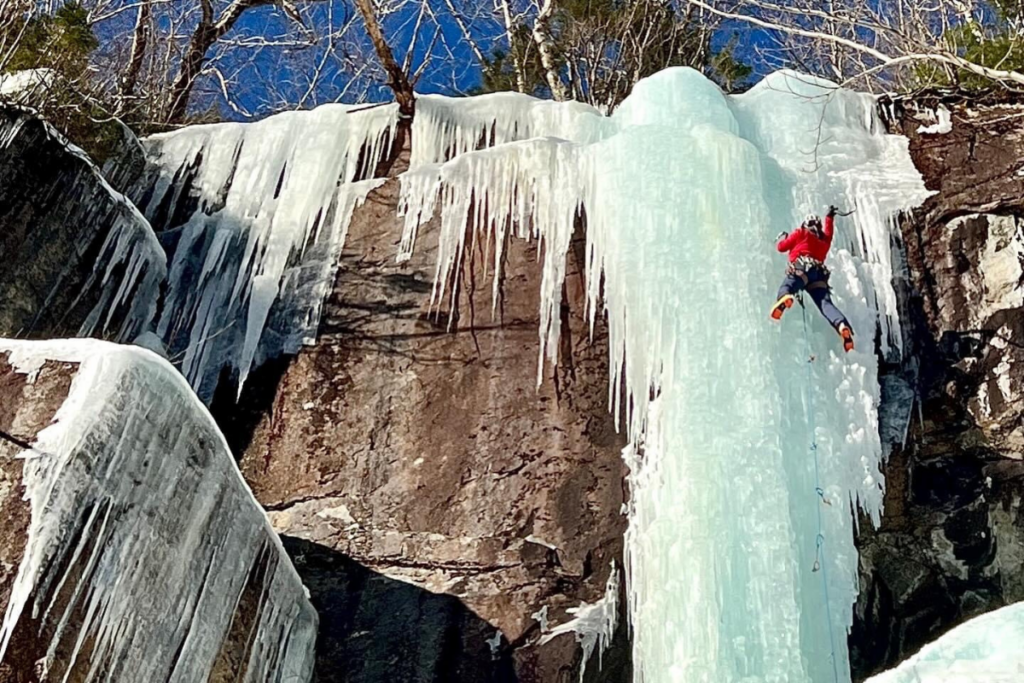
Photo by: Majka Burhardt
Bio:
Laurie has been the director of Woman’s programs and a year round guide for MMG for the last three years. She guides on Rock, Ice, and Alpine terrain. She has a special gift for making all her guests feel empowered and accomplished every single day.
We wanted to hear from her point of view what it’s like being a Guide. Here are her answers:
1. Why did you want to become a guide?
I love teaching and empowering people. Activities like rock climbing, ice climbing, and mountaineering provide a beautiful and challenging classroom for the profound work of self-discovery gained through stepping outside your comfort zone. The opportunity to facilitate and observe this process is a gift. Being in the mountains and climbing is a pretty amazing bonus.
2. What’s your favorite part of the job?
My favorite part is watching the transformation in guests throughout the day. They often begin the day with uncertainty, doubt, and anxiety. But throughout the day you see the shift to feeling empowered, accomplished, and proud of themselves. It’s magic to watch.
3. What’s your least favorite part of the job?
Dealing with the gear, especially in winter. There is a lot of time spent fitting crampons, moving gear around, and drying gear out. It is a necessary but tedious part of the job.
4. What are some hard truths about guiding?
This job does not command high wages despite the risks involved. Most small guiding companies cannot provide health insurance. In the Northeast, guiding is seasonal. There are seasons of work that are incredibly busy and hectic and others with little work to be had. In order to work year-round and full-time, a guide needs to be able to travel.
5. How do you see guiding evolving in the future?
I am hopeful that guiding will continue to work towards a higher standard of professionalism here in the US and that the general public will seek out professional and well-trained guides for their adventures in the mountains. The American Mountain Guides Association is working hard to move the profession in this direction.
6. What’s something about your job most people don’t realize?
In the US, guiding is not regulated, meaning that anyone can offer their services as a guide, irrespective of training or experience. I encourage all guests to ask about their guide’s training and certifications before they entrust their well-being in the mountains.
Give Laurie a follow (@laurie_wattclimbs) and join her on her adventures!
Heidi Wirtz, Guide for Smile Mountain Guides and Owner/Guide at Earth Play Retreats
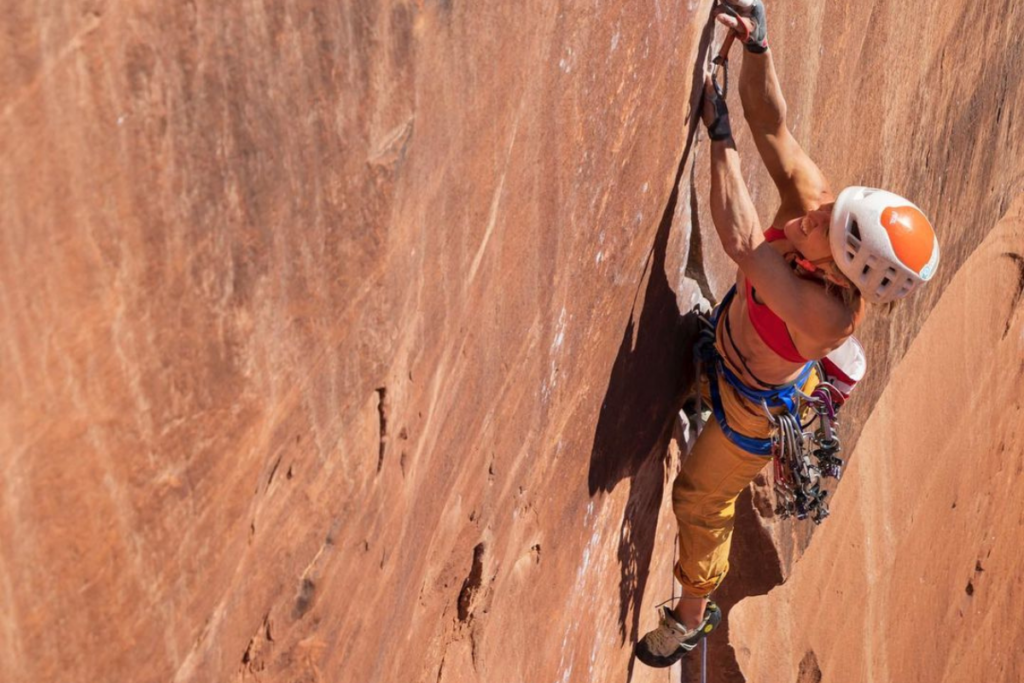
Photo by: Brooke Warren
Bio:
Heidi Wirtz is a climber, guide, and yogin. She holds a deep love of connecting with nature, sharing her passions, and inspiring others to follow their dreams. She has been climbing for over thirty years, letting her passion for adventure and exploration lead her to exotic and remote places around the world. Heidi has pioneered new routes up unclimbed big walls and mountains and pushed the limits of female exploration.
Heidi is the founder and owner of an adventure retreat business called Earth Play Retreats (EPR), which combines adventure sports, a connection to nature, and yoga. Through her guiding, instruction, and Earth Play Retreats, she is dedicated to offering her clients a transformational experience that will carry over into their everyday lives.
Heidi has been guiding in the outdoors for over 28 years and is a certified AMGA Rock Guide, Apprentice Ski Guide, and Apprentice Alpine Guide, making her an Apprentice Mountain Guide. Heidi is also an SPI Program Provider. Heidi is working towards her full IFMGA certification.
1. Why did you want to become a guide?
Because I love sharing my passion and also I love working outdoors.
2. What’s your favorite part of the job?
Being with amazing people and seeing them light up! A lot of my clients are now also my friends so guiding is quite rewarding and enjoyable this way. I am also an exercise addict to some degree and love how fit guiding keeps me! And there are many other reasons that I love it as well!
3. What’s your least favorite part of the job?
The paperwork/computer time
4. What are some hard truths about guiding?
You need to be self motivated, driven and dedicated! You need to be really competent at your given sport if you are going to be taking clients out. It is hard physically and can damage your body if you are not careful. It is a lot of responsibility. You need to go out even when you are not psyched and provide a great service to your clients no matter the weather or your mood. You will have difficult clients at some point and you still need to provide a great experience. You have to be a good communicator. You have to be tolerant and patient. The pay is typically not that great especially for new guides. Even seasoned guides sometimes don’t make very much money. This is not the case at Smile though, they are very fair and are definitely on the guides side! They are by far the best company I have worked for in my 29 years of guiding. It is still a male dominated field. As a female, sometimes you are treated poorly, though this is getting a lot better!!.
5. How do you see guiding evolving in the future?
This is a very broad topic. One way: I feel like guiding will need to evolve with global warming quite a lot. Already in many areas mountains that were once guided frequently are becoming less and less. We will see what happens…but I feel that if this continues we will have to move more out of the big mountains and onto the rocks. Though hopefully this is not the case.
Guiding is going more and more towards certification. This is a good thing I feel as we need standardization and safety protocol.I hope that the pay at some point balances out so that getting fully certified actually is beneficial financially. At this point the benefits are credibility and so you can guide in certain areas where without certification you are not allowed to work. In a perfect world I see more companies forming like Smile that really care about the guides and are trying to make it possible for them to stay in this business and find success.
6. What’s something about your job most people don’t realize?
They don’t realize how much goes into it..not just all of the training, but also all of the prep work and planning. We also have to be on top of our fitness as you need to always have reserves while out in the field. People also don’t realize that it is still a job and that we take this very seriously. That going recreational climbing is not the same as guiding.
Instagram handles: https://www.instagram.com/heidiwirtz/ and https://www.instagram.com/earthplayretreats/
Meg Nickman, Owner and Guide for Smile Mountain Guides
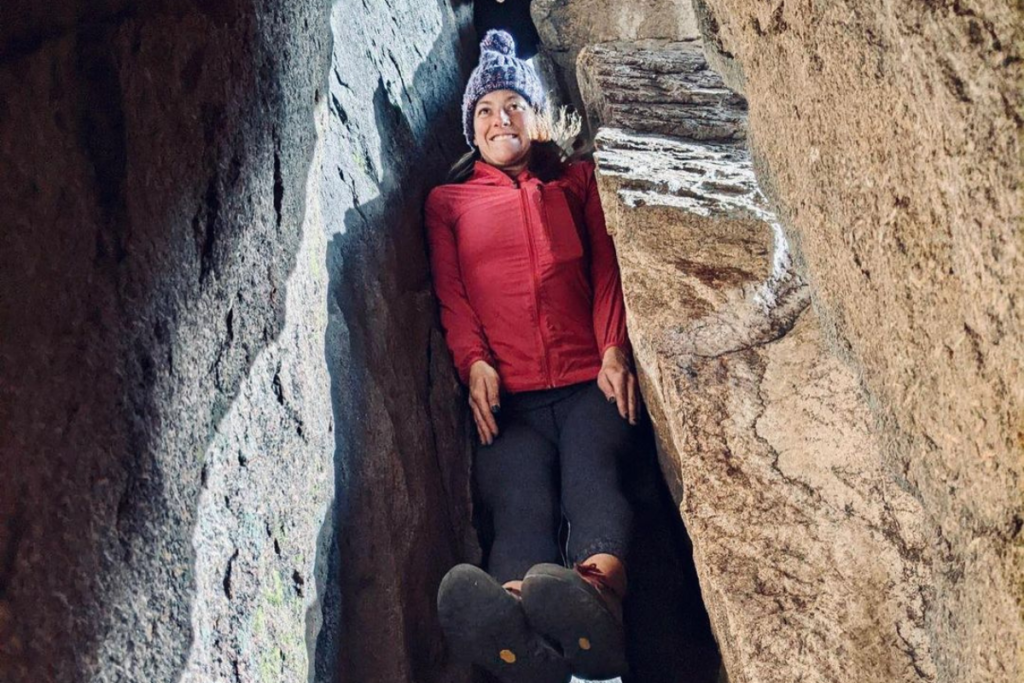
Bio:
Climbing has had a positive impact on Meg’s life. She loves to spend long days outdoors, striking a balance between epic-ing and relaxing in the mountains. Having climbed in venues like the Mendenhall Towers of Alaska, Peru’s Cordillera Blanca, Wyoming’s Wind River, and Teton Ranges, we bet she’s had her fair share of both. But more important than the place, Meg says,
“It’s not only about what we climb but who we share the experience with!”
Meg started her career in the outdoors working as an instructor for Earth Treks’ Outdoor School. She led a variety of programs ranging from experiential-learning-based trips for the Hill School, University of Delaware freshman orientation programs, and U-Penn leadership seminars, to introducing first-time climbers to the outdoors at local venues in the DC/Metro area. She now works with smaller groups in Colorado and Utah opening people up to growth and exploration in the mountains. She also happens to guide for SheSends Collective. Her passion creates a space where people feel at ease and inspired. See for yourself on your next trip with Meg!
1. Why did you want to become a guide?
I worked at a gym and saw enthusiasm from climbers who wanted to transition to the outdoors.
2. What’s your favorite part of the job?
Being in a natural environment. It’s a place where I can focus, learn, and appreciate life to its fullest.
3. What’s your least favorite part of the job?
When the weather doesn’t align with the adventure plans!!
4. What are some hard truths about guiding?
It involves a lot of unpaid labor outside of the experience in the mountains. As a guide it is important to advocate for yourself and seek out various means of support.
5. How do you see guiding evolving in the future?
I anticipate that there will be a shift in risk management with regards to climate change.
6. What’s something about your job most people don’t realize?
To be a high performing guide, I believe you have to take good care of yourself, physically, mentally, & emotionally. If you don’t prioritize self care, it doesn’t take long for everything else to spiral.
Give Meg a follow (@megaelangelo) and watch her “epic-ing” in the mountains.
Morgan McIntire, Guide and Program Coordinator for Granite Mountain Guides
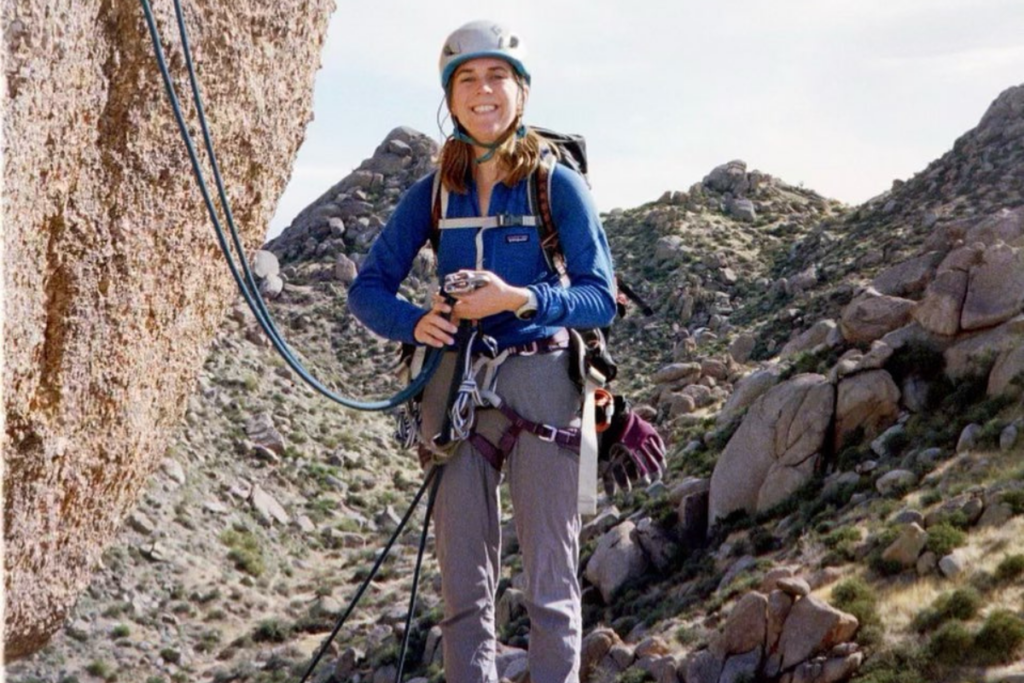
Bio:
Originally from Louisville, Kentucky, Morgan grew up running and her love for the outdoors was cultivated on the trails. After moving out west her love for outdoor adventure was amplified and she soon fell in love with climbing. Blessed by her friends who were willing to take out and teach her what they knew about rock climbing, she used her experience and knowledge to share with others as well.
In the past two years she has spent her time working at a rock climbing wall, guiding for a university’s outdoor recreation program, as well as guiding backpacking, climbing, and mountaineering trips in the Pacific Northwest. The opportunity to take people out or their comfort zones and help them push past their limits has shown Morgan the beauty of building relationships in the outdoors and she is excited to continue having an opportunity to do that.
Morgan is a Wilderness First Responder and a Certified American Mountain Guides Association (AMGA) Single-Pitch Instructor
1. Why did you want to become a guide?
I wanted to become a guide because it allows me to teach others the skills to get outside in the capacity that is most special to me: climbing. It allows me the opportunity to invest in individuals who strive to become self-sufficient climbers.
2. What’s your favorite part of the job?
My favorite part of the job is when a new skill clicks for a guest, and/or when I run into guests from the past who are out and about climbing on their own. It is always such a full-circle moment to witness individuals that I taught to become self-sufficient.
3. What’s your least favorite part of the job?
There is a lot of inconsistencies in the guiding industry. Work isn’t always guaranteed. It is a service but often times that is missed and it can be frustrating when you work your ass off and don’t even receive a tip. It is so physically demanding and I had knee surgery last year, it is a lot of pressure to recover to work or to not be able to do the thing you love due to an injury that was likely caused by how hard it can be on your body.
4. What are some hard truths about guiding?
It is frustrating to have to maintain certain memberships and certifications that keep getting more expensive even though the content doesn’t change.
5. How do you see guiding evolving in the future?
Guiding to me seems to be evolving towards epic experiences more than continued education. That is great for a large target market, but for me, it defeats the why behind why I started guiding which is much more education-based.
6. What’s something about your job most people don’t realize?
It isn’t always just climbing on the clock. It’s not necessarily the most comforting feeling to have to lead a route with a guest that has never even top-rope-belayed before. There is a lot of risk involved. There are always new efficiencies in processes, so it is crucial to be up to speed on the latest ways to do things.
Overall, I am so blessed to be guide and to get to take people outside in the capacity of climbing. I have faced my fair-share of hardships in the industry as a woman which is often times not being taken seriously despite how hard I work, how up-to-date I am on standards, etc. I feel so thankful to work for Granite Mountain Guides which is basically how I got my start in the climbing industry. It has allowed me to learn skills and to create events for women specifically with so much ownership and empowerment.
Give Morgan a follow (@morgan_woop_woop) and chase her around the world!
Juliana Garcia, Guide for BC Adventure Guides
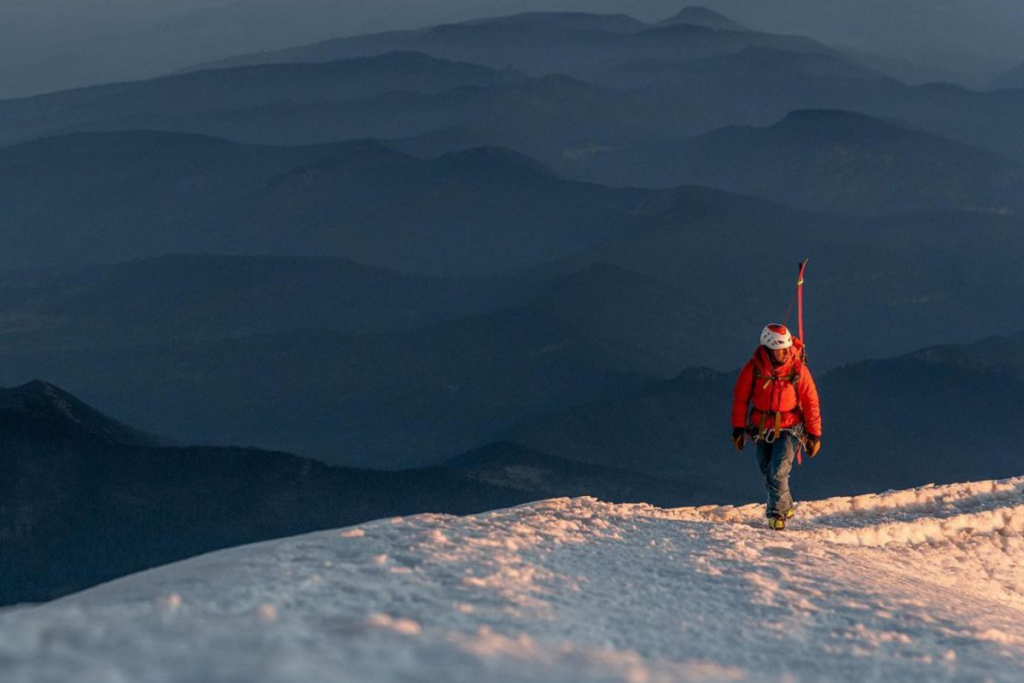
Bio:
Juliana has been mountaineering in Ecuador since she was 15 years old, accomplishing much in her career. She has climbed mountains and walls in the Andes, Peru, Bolivia, Colombia, as well as in Pakistan, Alaska, Greenland, the United States and the Alps. Among her distinguished successes, opening a new route in Peru: HK, on the north face of Huandoy East, TD + V + M3/4 which made the 2013 list of climbs for the “Piolet d’or”. Also recently in the summer of 2016 she opened a new route in Bolivia together with Anna Pfaff, they named this route: ¨La ruta del Solsticio¨ North-East of Tiquimani (5.519.m) 1600 meter 5.10b R.
Juliana is a certified Mountain Guide by ASEGUIM/IFMGA. She has guided in several countries around the world, as a climber, Juliana was President of the Ecuadorian Association of Mountain Guides, ASEGUIM, and is currently on the board of directors of the IFMGA. Juliana is an AIARE instructor and is part of the Ecuador Avalanche Education Group MSi (mountain safety info).
1. Why did you want to become a guide?
I wanted to learn more about climbing/mountaineering in general and I love to share that space with more people
2. What’s your favorite part of the job?
The interaction with more people and to help them to achieve goals
3. What’s your least favorite part of the job?
Seeing the glaciers retreat… the mountains in general changing because of our daily decisions as a society.
4. What are some hard truths about guiding?
You need to have a lot of patience, you generally travel a lot.
5. How do you see guiding evolving in the future?
I think guiding is a great tool to talk and share what we can do better as a human for the future.
6. What’s something about your job most people don’t realize?
That it’s a profession, and how much learning/experience and time is behind every guide!
Give Juliana a follow (@julianagarciaguide ) and chase her around the world.
Faith Dickey, Owner and Operator of Elevate Outdoors Guiding
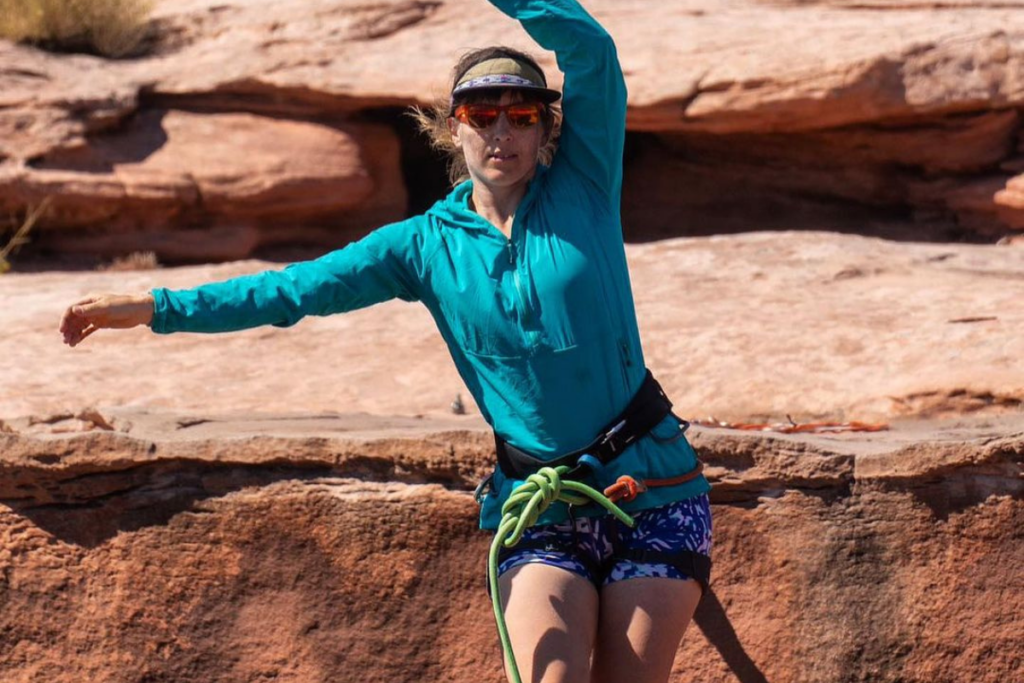
Bio:
My name is Faith Dickey and I am excited to not only be a woman-owned and operated business, but also to be an AMGA-certified climbing instructor and to teach others how to engage in these incredible outdoor sports. Come climb a desert tower, rappel off a cliff or walk in the sky with me!
A large part of my passion lies in helping people navigate fear and learn useful techniques for navigating mental barriers, getting more women and girls outside, and sharing the intersection of outdoor sports with personal growth. I aim to empower others by helping them expand their limits and learn what they are capable of, one step at a time. My business is focused on stewardship, inclusion, teaching clients about the history of these areas and the local ecosystems, with LNT principles as a guiding force in my operation.
1. Why did you want to become a guide?
I wanted to guide because my own life was profoundly changed by outdoor adventure sports, and after more than a decade being a professional athlete, I realized that I was most passionate about sharing what I had learned, and empowering others to push their comfort zones and overcome fear.
2. What’s your favorite part of the job?
Seeing others do more than they thought they could, and the pure joy that brings them.
3. What’s your least favorite part of the job?
I think the guiding industry is very undervalued, and it is hard to make a living as a guide. I wish guiding was a more valued career path.
4. What are some hard truths about guiding?
Guiding requires high social output, which can be exhausting. Additionally, guiding somehow fell into the “service” industry, and guides rely on tips to make up a large part of their income. While there is a large customer service component in the industry, most guiding positions require a high level of knowledge, expensive certifications, and the ability to manage risk and be responsible for the lives of others. It far exceeds most tipped positions, and frankly I wish guiding was valued enough that tipping was not how we made a livable wage.
5. How do you see guiding evolving in the future?
I hope guiding will become a more defined and standalone industry, similar to the film industry. I would love for us to move away from tipping, and instead pay guides what they are worth.
6. What’s something about your job most people don’t realize?
Many guides are paid “by the trip,” meaning if things go slower than we anticipate, we are literally earning less money per hour.
Give Faith a follow (@thefaithdickey) and get “high” with her.
Anna Rollins, Guide for Western Spirit Cycling Adventures

1. Why did you want to become a guide?
The idea of getting to share beautiful and thought provoking corners of the natural world is what originally excited me about becoming a guide. Moreover, there lies incredible potential to build community and connections when we experience both simple and profound time and place together. I have always been drawn to being a part of these moments and getting to foster them with others.
2. What’s your favorite part of the job?
Witnessing people surprise themselves, everyday!!
3. What’s your least favorite part of the job?
SO. MUCH. CLEANING.
4. What are some hard truths about guiding?
Life and work become mangled! I definitely lack the stability of a “normal” life that many people have and at times long for that. It can be difficult to tend to relationships in the ways that I would like to when I spend many months of the year out of range and far away from friends and family.
5. How do you see guiding evolving in the future?
More emphasis on sustainable tourism and how that lends itself in the backcountry. Guides have a unique opportunity to become a stepping stone for what it means to take care of the earth when spending time off the main drag. I think this role will grow each year as we carry forward as stewards.
6. What’s something about your job most people don’t realize?
It is full of the highest of highs and lowest of lows. Each day brings nuance, excitement, difficulty, uncertainty, and discovery and with that emotions wax and wane. I have learned to be flexible and calm as the world beats down upon me and to find gratitude each time the sky opens back up and the path becomes more clear once again. Guiding has been one of my greatest teachers.
Pedal hard with @annarollinz on Instagram.
Augusta “Gus” Klein, Guide for Western Spirit Cycling Adventures

1. Why did you want to become a guide?
I wanted to become a guide because it seemed like an incredible opportunity to bring people into the outdoor spaces that I love. I also saw it as a job that would challenge me and help me grow to be a better leader and educator. I have many friends who were guides and the way they carried themselves after their primary guiding season was desirable. They were so strong and confident and kind and I wanted to find that in myself too!
2. What’s your favorite part of the job?
I love the opportunity to bring people into the places that I love and showing them how to recreate responsibly, which they will hopefully take into their own personal recreation outside of a guided tour. I love hearing the stories of my guests and seeing the connections that happen between them. There is a special bond that forms between people that spend five days camping and biking and getting dirty together. The smiles are brighter, laughs are bigger, and the hugs are tighter!
3. What’s your least favorite part of the job?
Ah! The come down is intense! You get back from a trip and you want to relish in that high, but then you have to get everything cleaned and organized for the next trip. It’s hard to come back from the visible and presentational side of the job and have to work just as hard doing the invisible.
4. What are some hard truths about guiding?
It’s exhausting! And you don’t always have access to the support systems you need in the backcountry. Every one of the guides I’ve worked with are phenomenal, kind, and caring individuals. However, sometimes you just need something that they don’t have to offer or someone outside of this wild job to give you perspective.
5. How do you see guiding evolving in the future?
Oh man! I hope it becomes a lot more diverse! I think there is a serious underrepresentation of people who recreate in the outdoors in the guiding industry. In the past few years I’ve seen a lot of incredible women step into the guiding industry, but not stay in it for the long term. I want this environment to become more hospitable and welcoming so that all people feel comfortable and that there is space for us to grow and develop together.
Marilee Warfield, Guide for Foodie Footsteps Food Tours
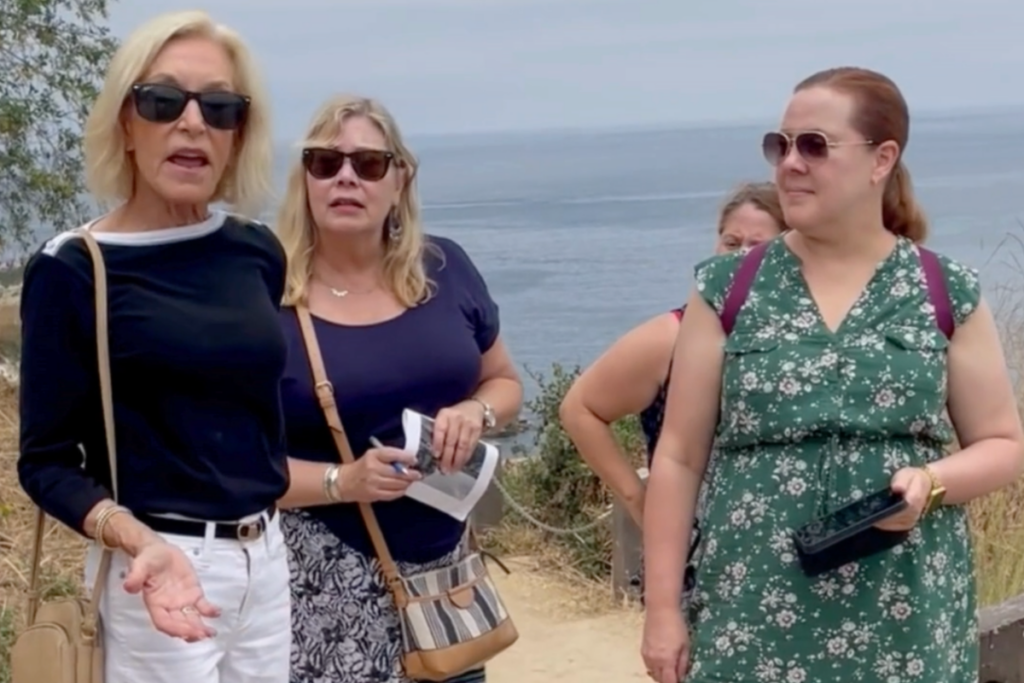
Bio:
Marilee Warfield is a tour guide extraordinaire for Foodie Footsteps, leading captivating culinary adventures through the enchanting streets of La Jolla and skillfully capturing the essence of the town’s vibrant food scene. A true local since 1964, Marilee’s heart beats to the rhythm of her beloved hometown. With a background in education and event planning, she’s a master storyteller and a connoisseur of good food and drink. When she’s not traversing the globe with her adventurous husband, Marilee can be found savoring the flavors of La Jolla and making new friends along the way. Join her for a mouthwatering journey filled with laughter, scrumptious bites and delightful surprises!
1. Why did you want to become a guide?
Being a guide gives me the opportunity to share what I like most about La Jolla. I love my town and thoroughly enjoy showing it off to people who have never been here before.
2. What’s your favorite part of the job?
My favorite part of the job is meeting people from all over the Country. I enjoy talking with them about where they are from, and answering as many questions as I can about La Jolla and the San Diego area in general. It is also fun to see how much people enjoy the food and the restaurants that we visit.
3. What’s your least favorite part of the job?
My least favorite thing about the job is not receiving a tip. Even when people seem to have loved the experience, occasionally they don’t offer a tip. It erodes my confidence a bit and makes me think they didn’t enjoy the tour as much as I would have liked. This is, fortunately, a rare occurrence.
4. What are some hard truths about guiding?
The hard truth about guiding is that it can be very tiring. It’s 3+ solid hours of walking, talking and being ON. Sometimes after a tour I just feel like sitting somewhere quiet and not talking to anyone.
5. What’s something about your job most people don’t realize?
A guide really needs to “read the room” on a tour. On some tours people want to ask tons of questions and find out everything about the area. On other tours people just want to eat, drink, party and talk to each other. I make it a point to be flexible and constantly adjust my presentation to make the experience what the group seems to want.
Jessica “Jo” Olson, Program Manager and Lead Guide for Ladies Weekend Out, in partnership with Golden State Guiding and Alpine To The Max
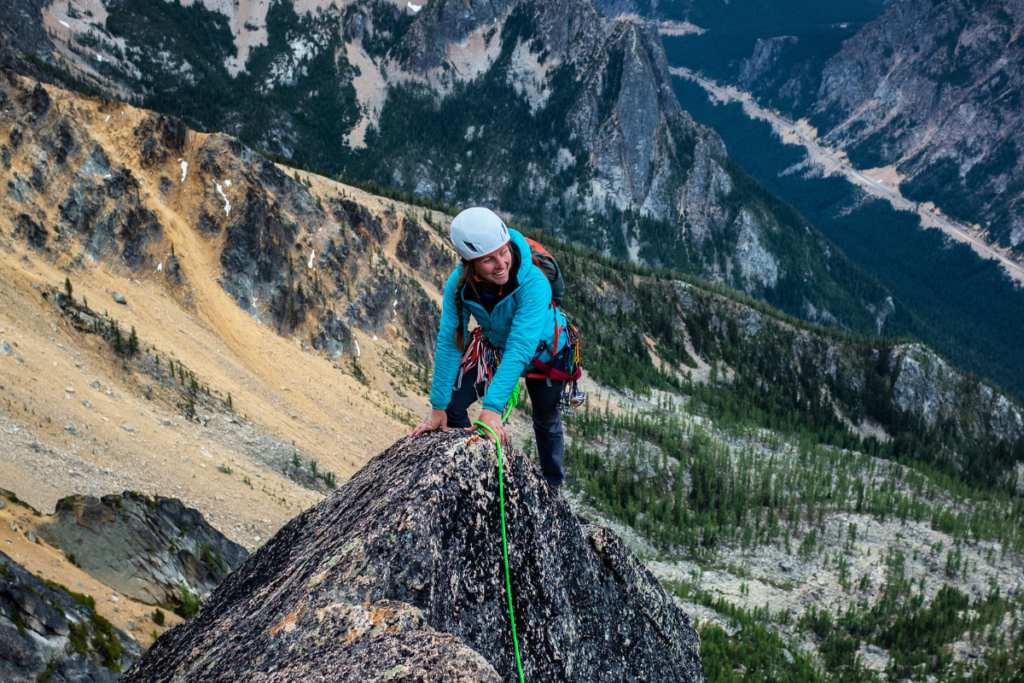
Bio:
Jessica Olson (aka JO) was born and raised in San Diego, where her love for climbing took off. She was introduced to the sport by some friends who took her out to climb at Mt. Lemmon while attending University of Arizona. It wasn’t until she came back to the states after traveling abroad for 8 months, that she truly started to shape her life around climbing. Moving back to San Diego, JO started working at the local climbing gym in 2014 and over the course of 3 years learned the ins and outs of the climbing lifestyle.
Having found a passion for teaching youth, JO wanted to take the classroom outside, to where her dreams continued to grow. After acquiring her SPI in 2016, she started to seek outlets that would allow her to develop as a guide. She built out her small SUV and hit the road, making her way to Alaska for a summer of guiding. While living on the road, Jo has traveled across the country in the pursuit of adventure, finding joy in the Eastern Sierra, Washington Pass, Squamish, Deserts of Utah, and out east in Tennessee and Kentucky. Since moving away from San Diego, she has been guiding primarily in the Pacific Northwest, furthering her love for teaching others how to become self sufficient climbers.
JO is an AMGA Apprentice Alpine and Rock Guide, Single Pitch Instructor, and Wilderness Emergency Medical Technician.
1. Why did you want to become a guide?
I started instructing at a Climbing Gym, and was welcomed into an amazing community of like minded climbers, who always wanted to go climbing outside. No matter what skill level each person was at, everyone was stoked to get out and have fun. Each person I went out climbing with, would teach me new skills, help grow my tools both on my harness and in my mind, getting me hooked on the learning process and growing my desire to continue my educational development in the climbing world. It got to a point where I wanted to learn the technical meanings of ‘why’ for every part of climbing. Building my own foundation of understanding and becoming more self-sufficient in the sport became so important to me, enabling me to become a leader and better explain the ‘why’ to friends when they started to ask me questions. A good friend and mentor was planning on signing up for their SPI course and exam, and I quickly followed suit, what better way to really solidify those skills, than to become a certified instructor? From there, my passion for teaching others about the sport evolved and developed into where I am today.
2. What’s your favorite part of the job?
My favorite part of guiding are the events I run called Ladies Weekend Out. Each event is focused around empowering women to learn foundational skills for whatever adventures they find themselves pursuing from Rock Climbing, to Backpacking and Backcountry Snow Travel. I love seeing the fire ignite with each person I work with, as they learn and acquire the tools in working towards becoming self-sufficient in the specific disciplines we dive into.
3. What’s your least favorite part of the job?
As I’ve grown within my role, I find myself on the computer a lot more than I’m actually in the field, be that for guiding or personal adventures. While I love being able to coordinate events, plan trips and make all the magic happen, it’s quite a role change from when I first was getting into climbing or developing as a guide.
4. What are some hard truths about guiding?
It’s hard on your body, mind and soul. Long days, little compensation (especially when you start, although it’s getting better), being looked down on for being small or being a woman, guiding is hard work and you’re not always appreciated for everything you do. With that being said, it’s also so rewarding in seeing your personal strengths develop, how much you’re able to problem solve at the drop of a dime and how nurshing the work can be when you guide people with purpose, and who are so grateful for sharing your experiences and knowledge to help them in their own personal growth.
5. How do you see guiding evolving in the future?
I would love to see guiding evolve to be more encompassed within educational establishments, partnering with climbing gyms and brands who are at the forefront in seeing the climbing culture boom. It would be awesome to create broader partnership with companies to make a positive impact by providing the tools (be that the gear we use to climb, or the accessibility to understanding movement and systems within a educational space) by partnering with guides and guide services to help break down the barrier for education, and helping foster a community of responsible people recreating in outdoor spaces.
Give her a follow here: @jessielyse
And check out all of her companies:
Annie DeFrancia, Guide for San Juan Expeditions
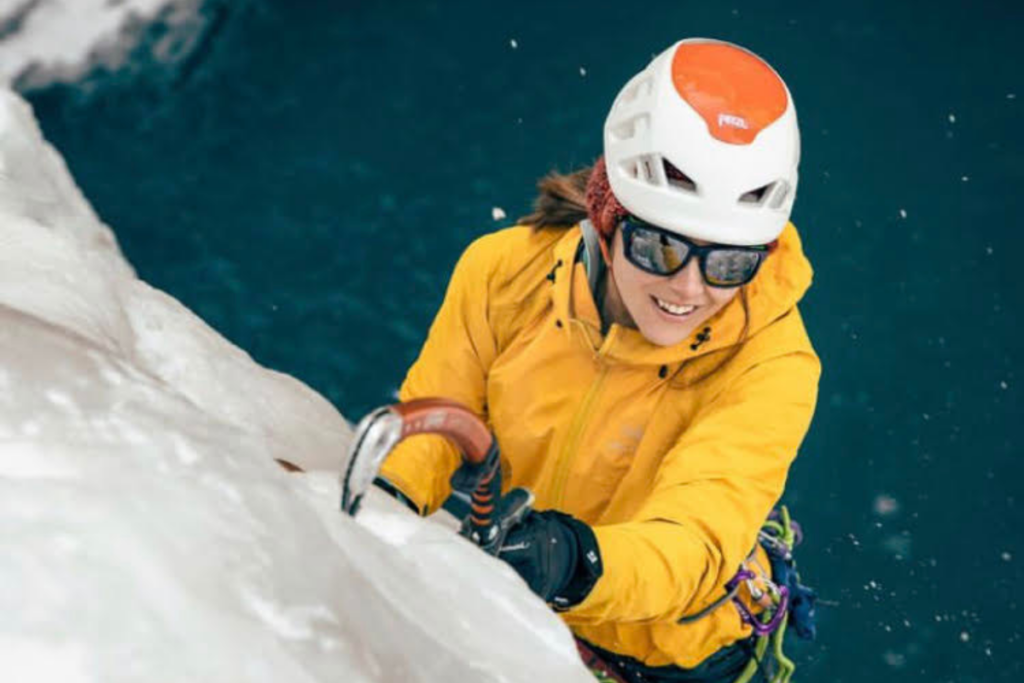
Bio:
Annie is a graduate of the Fort Lewis College Adventure Education Program, after which she spent three years working for the Colorado Outward Bound School as an instructor. She taught backpacking, mountaineering, and backcountry skiing courses. Later, she began ski patrolling, and eventually pursued a career with the Durango Fire Protection District.
Annie’s full-time job is working as a firefighter/paramedic, but she is still often seen in teaching roles, as being an educator is one of her professional passions. She primarily instructs wilderness medicine courses and avalanche education classes, while remaining a ski patroller part-time in the winters.
Annie enjoys spending time climbing, skiing, biking, and romping around the San Juan Mountains. She also considers herself a seasoned waffle-making professional, and believes they taste best in the desert.
1. Why did you want to become a guide?
I love playing outside! I feel very appreciative of the mentorship I received that allowed me to gain competency and develop expertise, and I hope to pay that forward.
2. What’s your favorite part of the job?
The opportunity to enjoy the outdoors with other people who are also stoked to be there.
3. What’s your least favorite part of the job?
This is a second job for me, which means even less time with my family and friends.
4. What are some hard truths about guiding?
There is a lot of ego present in both the guiding industry and the recreational world. It is a challenging issue to navigate and creates tension.
5. How do you see guiding evolving in the future?
The guiding industry seems to continue to expand as popularity in outdoor recreation grows. Hopefully, permitting can be well managed so as to protect the outdoor spaces we are all looking to enjoy, while ensuring folks are able to recreate safely and responsibly.
Brooke Warren, Guide for San Juan Mountain Guides
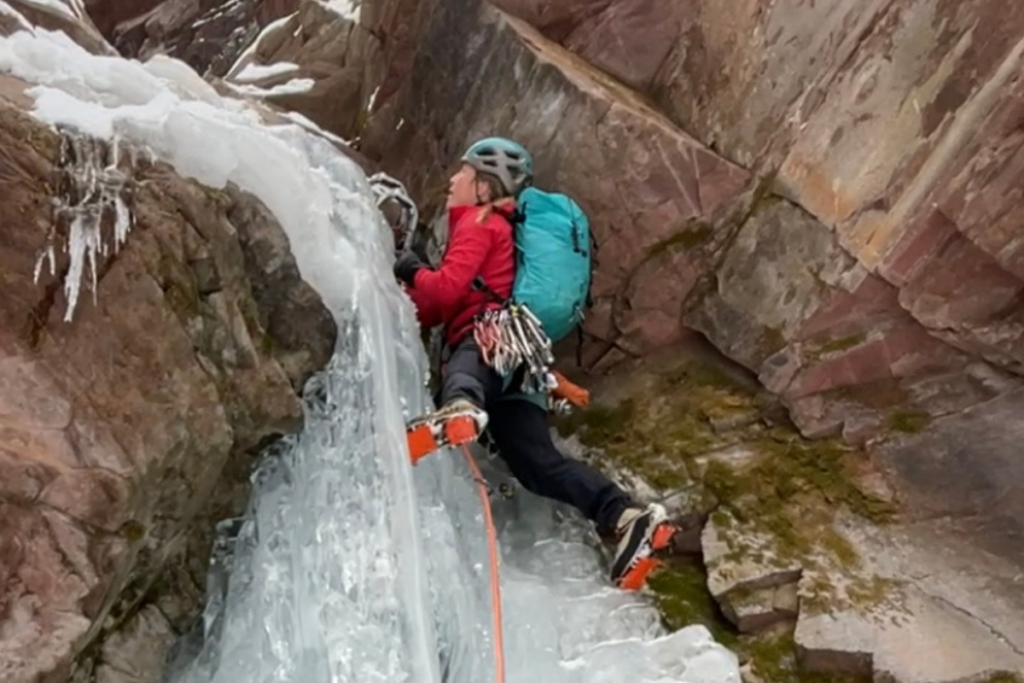
Bio:
Brooke is a Colorado local who grew up skiing, climbing, and galavanting around the mountains of her hometown, Crested Butte. She has climbed extensively in U.S. destinations such as Indian Creek, Yosemite, Vedauwoo, and the North Cascades and internationally in Chile, Mexico, Peru, Canada and Afghanistan. She loves introducing techniques to new skiers and climbers as well as helping people develop their mountain craft with larger goals in mind.
She guides in Alaska, Washington and Colorado on objectives ranging from Denali expeditions to single-day backcountry touring or rock climbing trips. She has a background in outdoor education working for Outward Bound as well as other experiential learning institutions.
Brooke has completed her AMGA Advanced Rock Guide Course, Ski Guide Course, and Alpine Guide Course. She holds an AIARE Pro 1 avalanche certification and is an AIARE Avalanche Instructor. She also has certifications as a Wilderness First Responder, LNT Trainer, and ITRA Rope Rescue Technician.
1. Why did you want to become a guide?
I wanted to become a guide for a few reasons. I think protecting wild places is important, and sharing those spaces with people is one of the most sure ways to make people care about them. I love being part of people’s progressions as they overcome challenge and believe in their abilities to move through the mountains. I also really love climbing and skiing and being outside, so guiding is a great way to do that while sharing my joy with others.
2. What’s your favorite part of the job?
My favorite part of guiding is helping people make memories of a lifetime and being stoked with them.
3. What’s your least favorite part of the job?
My least favorite part is that I often feel too fatigued to go big on my days off.
4. What are some hard truths about guiding?
One hard truth is that if you want to be a really strong athlete, you’re not going to get there through guiding. That is a separate goal. Another hard truth is that the magic fades after you do the same trip the 100th time, and you have to be intentional about noticing the amazing parts that you used to be in awe of. Unfortunately it’s also a luxury to be able to hire a guide, so it prices people out of having these experiences.
5. How do you see guiding evolving in the future?
In the United States I think the biggest growth area is courses. I notice that people really enjoy learning skills that they can take into the mountains on their own.
6. What’s something about your job most people don’t realize?
You still have to do paperwork as a guide! It’s really important to plan for trips, make sure waivers are signed, follow up with people, and do marketing for job security.
Give her a follow here: @brooklynwarren
Britney Charme, Guide for Western Spirit Cycling Adventures
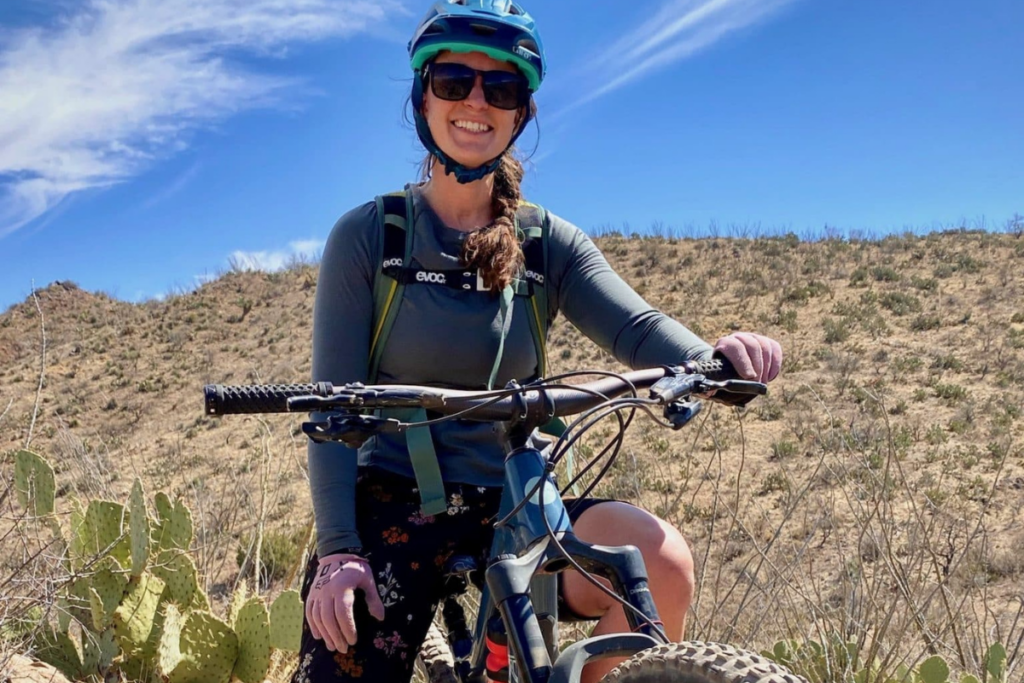
1. Why did you want to become a guide?
I wanted to guide because I believe that how you spend your days is how you spend your life. After working as an event planner for 8 years, I knew that I loved facilitating experiences that help people create lifelong memories, but I wasn’t passionate about weddings and corporate events. I wanted to spend my days outside, on my bike, building connections to people and places. As a guide, I can do all of that. I help people create memories while outside riding our bikes. My days are rich and full of adventure. Every trip that I guide is like a mini event that I can experience alongside my guests and co guides. I put my heart and soul into my job and it brings me a lot of joy. It’s the best of both worlds.
2. What’s your favorite part of the job?
What I love most about guiding is the raw and visceral relationship I have with the places that I run trips. I can gain a deep understanding of the character of the land when I return year after year and in different seasons. I’ve seen places like Canyonlands with gorgeous bluebird weather and I’ve also seen it in a blizzard, with monsoon rains and washed out roads. One of my favorite guiding memories is waking up on the White Rim after an unexpected snowfall. We crawled out of our tents to see the red rock covered in white snow. The water lines in the truck were frozen so we boiled water from our water bottles to make coffee and watched the light slowly move across the canyons as the day warmed up and the snow began to melt. It was pure magic.
3. What’s your least favorite part of the job?
Cleaning the communal shit box after a trip (also known as a groover). But hey, guiding can’t be glamorous all the time.
4. What are some hard truths about guiding?
Guiding is hard. Really, really hard. It’s the kind of job that you do only if your heart is truly in it. The “why” matters in this job. All the uncomfortable moments like cooking dinner in 60 mph winds or waking up sick and knowing you are 100 miles from nowhere are worth it when your career is truly aligned with your passion.
5. How do you see guiding evolving in the future?
I would love to see the guiding industry evolve in a way that allows guiding to be a sustainable and respectable long term career path. With time and experience, guides develop strong risk assessment skills, become proficient problem solvers, hone in their medical skills and learn an immense repertoire of trips with a solid understanding of the logistics that go into each particular trip. All of this experience is invaluable to guiding companies because the clients receive a safer, more well rounded and higher quality product. An issue that I see in the industry sits with retention of guides. After guiding for a few years and obtaining the experience needed to be skilled and proficient, guides often leave their job for better compensation and work life balance in other industries. I think a lot of people write off guiding as something to do in your 20s and move on from when you are ready to settle down. It is time for an industry wide shift where recognition of the value guides bring to their companies is reflected in the financial compensation guides receive (salary and benefits) as well as thoughtful and sustainable scheduling.
6. What’s something about your job most people don’t realize
I wish more people would understand that their guides have no judgement or attachment to how fast the client is. By fast, I am referring to a client’s pace on the trail. Our clients come from all backgrounds and experience levels, shapes and sizes. Often when a client is cycling in the back of a group, they become self conscious about their pace and apologize over and over again to the guide for “how slow they are going”. To this I say, “come as you are!” We are out here guiding because we love bikes and we love wild beautiful places. We want to share these experiences with as many people as we possibly can. We truly dont care if you are slow or inexperienced. I always tell my clients they can apologize one time for being “slow”, because I understand their need to, and then they have to let go of all their self judgment and have some fun.
Winslow Passey, Mountain Guide for Wasatch Mountain Guides and Exum Mountain Guides, Owner/operator/Guide for In The Company of Guides, and Mindfulness/Health Coach for Vibrant Health Evolution
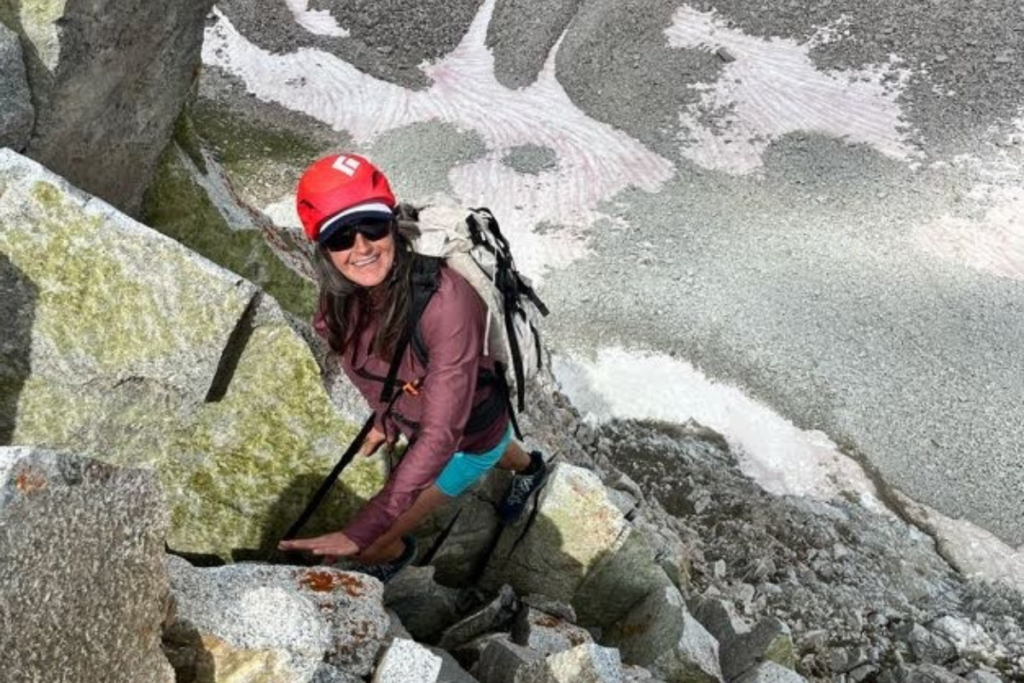
Winslow grew up in Georgia playing all kinds of sports, lettering in 5 varsity sports in every year of high school. She played softball and basketball for two years in college. During her senior year of college, she moved to Utah, where she fell in love with the mountains and a bunch of new activities. This included skiing, mountain biking, backpacking, rock climbing, and mountaineering. Being a pediatrician was her intended path until she began working in a wilderness survival program where she thrived for 8 years.
Looking for the next fun adventure, she began guiding in 2002. Winslow has guided all around the world on peaks like Denali (9X), Aconcagua (2X), Nepal (11X), Mongolia’s highest peak, and Antarctica’s Mt. Vinson, and has skiing to the South Pole (5 seasons).
Bodhi, her son, was born in 2013. Winslow wanted to be around for him and so she followed her dream of helping others and is now a Mindfulness and Health Coach. Interestingly, she has been combining her coaching and guiding ever since. She often has her clients working with her in both capacities.
1. Why did you want to become a guide?
I was drawn to guiding by my love for the outdoors and adventure sports. Moving from Georgia to Utah for college opened up a world of skiing, climbing, and biking that captivated me. After eight years in wilderness therapy, where I discovered my passion for working outdoors, I decided to pursue a career that allowed me to share my love for the mountains with others.
2. What’s your favorite part of the job?
My favorite part is the people I meet. Guiding brings me into contact with incredible individuals from around the globe who are adventurous, kind, and inspiring. I also love the opportunity to do what I’m passionate about while teaching and guiding others. It’s incredibly rewarding to see people fall in love with backcountry skiing and to have longstanding relationships with clients who return year after year.
3. What’s your least favorite part of the job?
The uncertainty of work dates can be challenging. Each season requires meticulous planning, including securing permits, obtaining insurance, and managing administrative tasks. While I enjoy planning trips, I’d much rather be out skiing.
4. What are some hard truths about guiding?
One hard truth is the potential impact of injuries. If I were to get injured, it could mean months without work, which is a significant risk in this profession.
5. How do you see guiding evolving in the future?
I believe guiding will continue to professionalize, with more guides seeking certification as the standard. I also want to see improvements in the permitting system to make it easier for local guide companies to access work opportunities.
6. What’s something about your job most people don’t realize?
Many people don’t realize the amount of maintenance required for this job. Ensuring my body is healthy and strong through proper nutrition, stretching, and strength training is essential to prevent injury. Additionally, running a guiding business involves extensive planning and preparation, especially for international trips, which can take months of meticulous organization.
Follow Winslow and all her adventures here: @vibrant_health_evolution

